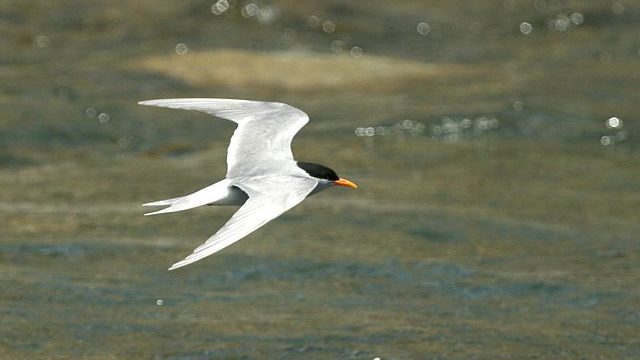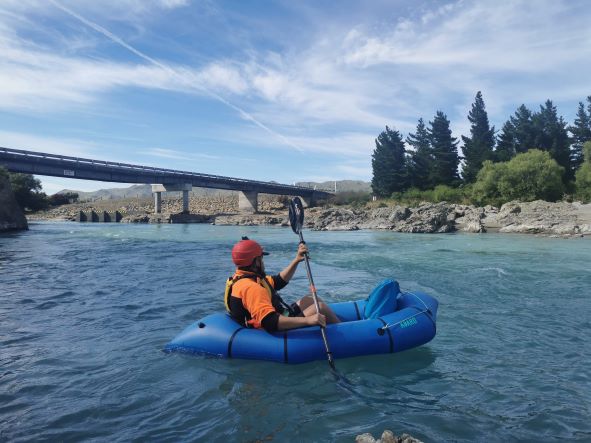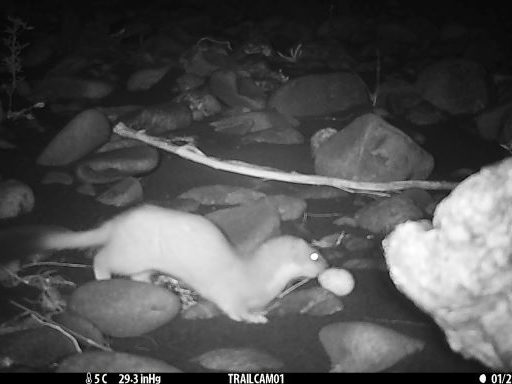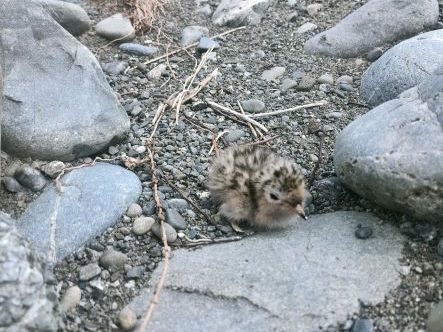Have you ever needed to take a pack rafting course to be able to carry out your day job? Apprentice ecologist Keegan Miskimmin has. Why? Because the most effective way to assess new breeding colonies for endangered river birds is by raft.

As part of his work with Wildlife Management International Ltd, Keegan spent four months living in Hanmer Springs in the Canterbury region leading a project monitoring tarapirohe (black-fronted terns) and tarāpuka (black-billed gulls).
Here, Keegan gives us his first-hand account of the project and life as an apprentice ecologist.
Monitoring tarapirohe and tarāpuka – from a distance

When monitoring critically endangered birds, you have to keep your distance.
Tarapirohe and tarāpuka are critically endangered birds that mostly nest on inland braided riverbeds. Because of their rapidly declining nature, we take every measure to make sure our presence doesn’t interfere with their breeding season.
So how do we stay stealthily hidden? Most of the work is done from a truck and includes long days having to travel to all our colonies. But the most effective method is pack rafting down the river to identify established colonies. Hence why my training included a two-day pack rafting course to gain confidence on the river.
Navigating new waters as an apprentice ecologist
I joined Wildlife Management International Ltd, (WMIL) in November 2020 as part of the Predator Free Apprentice Programme. WMIL is passionate about monitoring and protecting native species and habitats, with a particular focus on native bird species monitoring and predator control.
In my two years with WMIL, I’ve been fortunate to work on a variety of projects already.
I’ve surveyed the pakahā (fluttering shearwater) population in the Marlborough Sounds. I’ve travelled to Aotea (Great Barrier Island) to monitor the breeding success of tākoketai (black petrel). And I’ve worked on Chatham Island trapping introduced predators to help protect the critically endangered taiko (magenta petrel).
As part of my professional development, I led a four-month project monitoring tarapirohe and tarāpuka. And it has been a life-changing experience.
Setting up for the season: locating breeding spots and nests

Monitoring tarapirohe and tarāpuka is critical to their survival.
What are we monitoring to observe? We want to better understand the threats they face and how we can improve their breeding success.
Unfortunately, threats for these birds come in a number of different forms: introduced predators including stoats, hedgehogs and rats, native avian predators like kāhu (harriers) and karoro (southern black-backed gulls), flooding, heat exhaustion, and human activity – such as four-wheel driving.
Our river-survey work took place along the Hurunui and Waiau-Uwha Rivers and began in early October – the start of the breeding season.
Once the colonies are located, we begin to monitor them to record their breeding success. We then identify all the nests at the colony, walking in a zig-zag pattern across the pebbles and rocks. The eggs are expertly camouflaged, so extra careful walking is required!
Monitoring progress and hatching

The next stage involves checking each colony at least once a week to get an update on how they are progressing. As the eggs hatch, the chicks spend only a day or two at the nest before they start to explore their home.
When they get older the parents will take them to the river’s edge to feed them. Once this happens, we start to look for small specks of movement against the unmovable rocky landscape. While scanning, we see the heat glare shimmering off the rocks, putting into perspective just how hot these rocks can get.
Chicks tend to stay tucked into the shadows of the rocks to keep cool, but their expert camouflage does add another layer of complication when trying to count chick numbers.
To aid us in this constant game of hide and seek, we have found a technique to help us identify chicks – we look for adults landing with food in their mouths to help us locate the chicks.
Suddenly, a small beak will pop out from a rock to receive its next meal! The terns keep us on our toes – quite literally – as we’re constantly trying to figure out where they are and what stage of chick-rearing they are in.
The risk of introduced predators

Terns are feisty and incredibly protective parents – who will not hesitate to defend their nests. They will dive-bomb us, screech their disagreement, and try anything to scare us away.
Therefore, to reduce the stress we put on these endangered birds, we keep our time spent monitoring them to a minimum. We only check on the status of the nests and change the cameras when we visit.
While these defensive methods work well on us and other native flighted predators – such as kāhu, and karoro – land-based threats from introduced predators do not incite the same behaviour, and so the birds are more vulnerable to predation.
What’s more, most predation events occur at night, when the bird is less aggressive and more likely to abandon their nests if a predator appears. Despite our best efforts, sometimes the terns will set themselves up on patches of the river connected to the mainland, meaning the risk of predation is quite high.
We are actively on the lookout for any signs of predation, including empty nests, broken eggshells, and footprints – but our best tool for the job is the motion cameras we set up. Connected to solar panels, they remain charged and ready to capture any predation events. Capturing predation events on camera enables us to record more accurately the threats these birds constantly face.
New threats coming in a flash

While monitoring the birds for four months, flash flooding was a constant battle for the birds. It wiped out nests, eggs and even chicks.
Unfortunately, it also interfered with our data and planned monitoring because it meant we couldn’t cross the rivers to get to the colonies at crucial moments to see how the nests were going after each flash flood.
If the nests did fail, the birds will re-attempt nesting, which meant we pack rafted the rivers at least once a month to see if any new colonies had popped up.
Looking ahead
My time in Hanmer Springs was truly amazing. From sifting through camera footage, to zig-zagging my way through a colony, to trapping predators to prevent them getting on the islands. No two days were ever the same.
As for the future of these birds? I’m writing a report on summarising the season’s findings with recommendations for future work on how we can best help these wonderful, endangered species for next year and beyond.
What’s the Predator Free Apprenticeship Programme?
The Predator Free Apprenticeship Programme kicked off in late 2020, as a result of Jobs for Nature funding from the Department of Conservation. There are currently 64 apprentices placed with a range of host organisations around New Zealand.
The two-year programme gives people experience and training in predator control. It’s growing the experts of the future that will help us meet the 2050 target.

